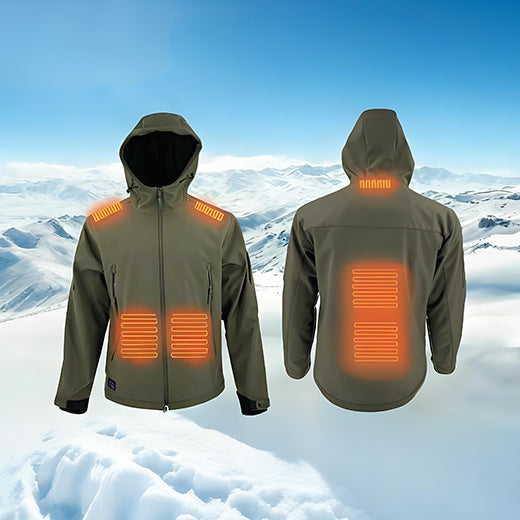Evaluating Winter Garments: Insulation Testing Methods

1. Introduction
In cold climates, the ability of a winter garment to retain heat (insulate) is not merely a matter of subjective “warm feeling” — it must be verified, quantified, and certified. For manufacturers, rigorous insulation testing helps justify claims, ensure safety, and support product differentiation. For consumers, trustworthy insulation ratings guide purchase decisions. With recent advances in materials science (for example, Y-Warm, a nano-porous insulation membrane), it becomes essential to understand how conventional testing methods can adapt and validate these innovations.
2. Basic Principles of Thermal Insulation
Thermal insulation in clothing works primarily by trapping air and slowing conduction, convection, and radiation. Body heat must travel outward; the better the barrier, the slower the heat loss. Key factors:
- Conduction: heat flow through materials. Materials with low thermal conductivity (k) help reduce conduction.
- Convection: air movement inside or through clothing. Minimizing air drafts helps.
- Radiation: infrared radiation from the body. Reflective layers or IR-transparent design may influence radiative exchange.
A garment’s effective insulation results from not just the material, but also air gaps, fabric structure, layering, surface treatments, and moisture.
3. Units & Indices: CLO, R-value, etc.
A common metric in apparel and comfort science is the CLO unit: 1 CLO is defined as the insulation that allows a person at rest to be comfortable in an environment at about 21 °C (70 °F) under typical indoor conditions. Higher CLO values mean more insulation. Other metrics include R-value (used in building insulation) and raw thermal resistance (m²·K/W). In garment testing, CLO is often more practical. The “comfort temperature rating” concept links a garment’s insulation to the lowest ambient temperature in which a wearer (at a given activity level) is predicted to remain comfortable.
4. Standard Test Methods: Manikins, Hot Plates & Chambers
To objectively measure insulation, standardized methods are used. Broadly, these can be grouped into:
- Material tests: e.g. guarded hot plates, measuring thermal conductivity of textile samples under controlled conditions.
- Manikin tests: heated or “sweating” manikins dressed in garments, placed in controlled environmental chambers.
- Human subject trials: real wearers in cold chambers, measuring physiological responses (skin temperature, comfort ratings).
Standards from ASTM and ISO define protocols for many of these.
5. ASTM F1291 & F2732 in Detail
Two key ASTM standards for garment insulation testing are:
- ASTM F1291 — Standard Test Method for Measuring the Thermal Insulation of Clothing Using a Heated Manikin. This defines how to dress a manikin, control environmental conditions, measure heat flux, and compute insulation resistance.
- ASTM F2732 — Standard Practice for Determining the Temperature Ratings for Cold-Weather Clothing. It builds on F1291's measurements to predict a “comfort temperature rating” for garment systems at two levels of activity (e.g. rest vs walking).
F2732 emphasizes that temperature ratings are guidelines and depend on the base ensemble, activity level, and individual differences (mass, metabolism).
6. Laboratory Material Tests: Guarded Hot Plates & Thermal Conductivity
Before ensemble testing, individual materials are often characterized using hot plate or guarded hot plate apparatus, which measure thermal conductivity (k) and thermal resistance per unit thickness. Some tests also measure water vapor resistance (i.e. breathability) and air permeability, because moisture and wind leakages significantly affect real-world performance.
These tests are precise and reproducible, but do not capture full-system effects like layering, seams, or draft leakage.
7. Challenges & Limitations in Insulation Testing
Even with advanced testing, several issues remain:
- Nonuniform insulation: Some body areas (torso vs limbs) receive more or less insulation.
- Motion effects: Movement pumps air through garments, reducing effective insulation.
- Moisture & condensation: Sweat or humidity degrade insulation performance.
- Leakages & seams: Gaps, open zippers, and poorly sealed seams compromise real-world performance.
- Individual variation: Body shape, circulation, metabolic rate all affect how “warm” a person feels even if insulation is constant.
Therefore, test results must always be interpreted cautiously.
8. Frequently Asked Questions (FAQs)
Q1: What is the difference between insulation measured on a material vs a garment?
A: Material tests (e.g. hot plates) measure intrinsic thermal resistance of fabric layers alone. Garment (ensemble) tests on manikins include real-world effects like seams, leaks, layering, and air gaps.
Q2: Does a higher CLO always mean the garment is warmer in all conditions?
A: Not necessarily. While higher CLO indicates greater insulation under test conditions, real-world performance depends on wind, moisture, movement, and how well the insulation is maintained in use.
Q4: Can thermal cameras replace manikin testing?
A: Infrared thermography and prediction models are useful supplementary tools, but they do not fully replace the precise heat-loss measurements of manikin tests under standardized protocols.
Q5: How does motion affect insulation ratings?
A: Movement pumps air through clothing, decreasing effective insulation (sometimes called “pumping effect”). Many test protocols assume static posture, so real performance under activity can be lower.
Q6: How should consumers interpret “temperature rating” labels?
A: Use them as rough guidance. Check which standard was used, what activity level, and understand that real-world conditions (wind, moisture, layering) can shift performance by several degrees.
9. Conclusion
Accurate testing of winter garment insulation is essential for credible performance claims and consumer trust. The established methods — such as ASTM F1291 / F2732 manikin ensemble testing, guarded hot plates, and environmental chamber trials — provide systematic, reproducible data. Nonetheless, they have limits, especially when faced with next-generation materials that challenge traditional design norms.
In short, the future of winter wear lies not just in novel materials, but in rigorous validation, transparent labeling, and integration of smart, adaptive systems. Only then can we trust that a “–20 °C rated” jacket truly keeps us warm when the cold strikes.

